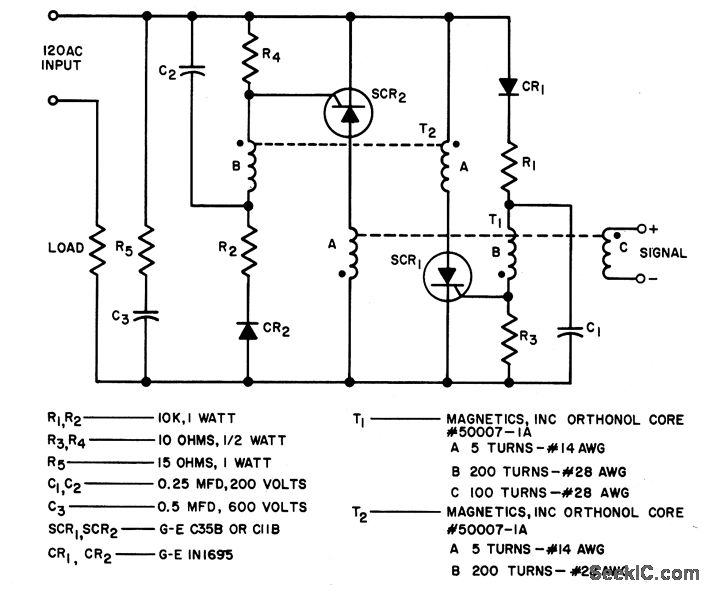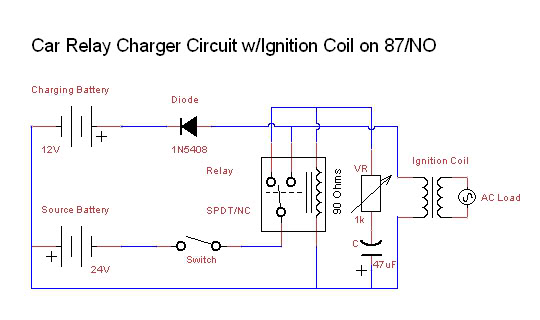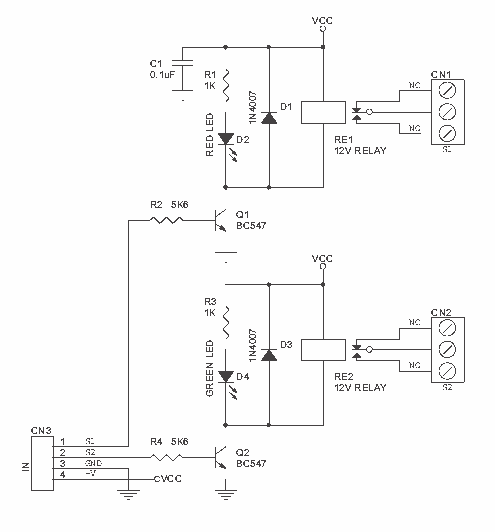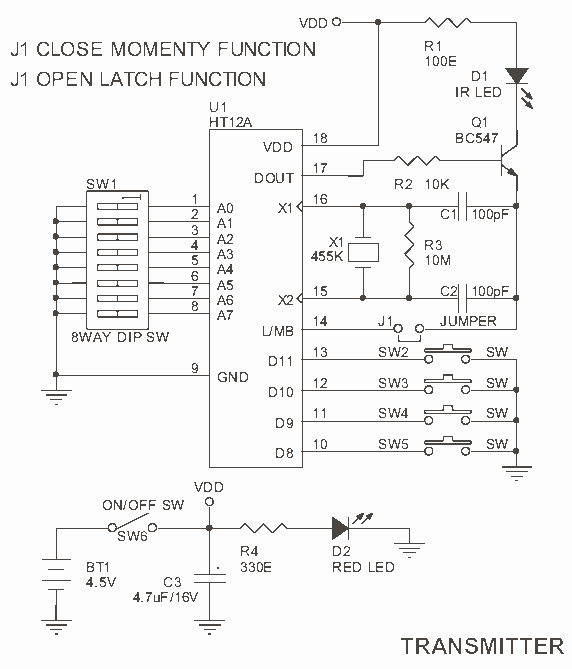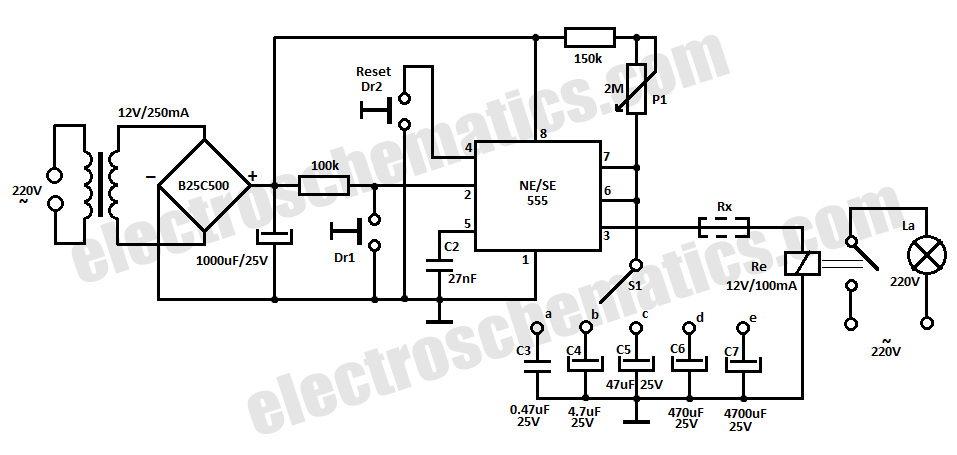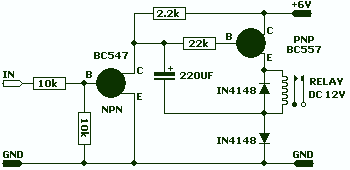
relay tutorial
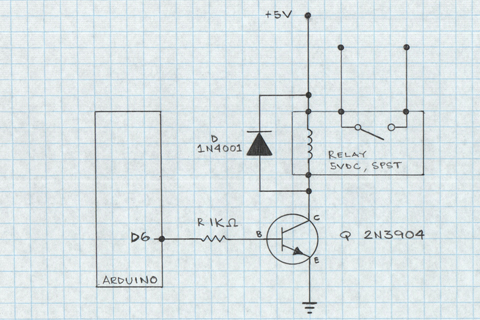
A relay is an electromechanical switch that operates by opening and closing under the control of another electric circuit. When current flows through the relay's coil, a magnetic field is generated, causing an armature to move, which either establishes or interrupts an electrical connection. Once the current is removed from the relay coil, the armature returns to its resting position. It is crucial to install a diode across the relay coil to protect sensitive electronic components from voltage spikes generated when the current is cut off, due to the collapse of the magnetic field. The relay in this example operates at a coil voltage of 5VDC, meaning it activates when 5VDC is supplied to the coil. Although the output pin of an Arduino provides 5VDC, the current needed to activate the relay exceeds what the Arduino can safely deliver. Therefore, a 2N3904 transistor is employed to supply a higher current 5VDC source to the relay coil. The primary purpose of using a relay is to control a circuit with a higher current than the Arduino can manage directly. While relay switches are slower than transistors, they offer advantages in specific applications. When using a transistor to switch a higher current or voltage circuit, both the control and switched circuits must share a common ground. However, this is not always feasible, particularly when switching an AC circuit with a DC control circuit. In such cases, a relay provides mechanical isolation between the two circuits. Like standard manually operated switches, relays are available in various configurations, including SPST (single pole, single throw - the type used in this example), SPDT (single pole, double throw), DPST (double pole, single throw), and DPDT (double pole, double throw), among others. Relays also have a coil voltage rating that specifies the necessary voltage and current to activate the coil, along with a maximum current and/or voltage rating for the switch. The relay used in this example is small and can handle up to 1 amp of current through its switch, while larger relays are available that can safely switch much higher currents.
The relay operates as a crucial component in controlling higher power circuits with low-power control signals. It allows for the isolation of sensitive components from high-voltage or high-current loads, which is essential for protecting microcontrollers such as the Arduino. The diode placed across the relay coil, often referred to as a flyback or freewheeling diode, serves to redirect the inductive kickback generated when the relay coil is de-energized. This diode is typically a standard rectifier diode, such as the 1N4001, capable of withstanding the reverse voltage generated during this process.
In practical applications, the relay's mechanical components, including the armature and contacts, are designed to handle specific electrical loads. The choice of relay should be matched to the application's requirements, considering both the voltage and current ratings. For instance, in scenarios where the load exceeds the relay's 1 amp rating, a larger relay with a suitable rating should be selected.
In summary, relays provide a reliable means of controlling high-power circuits through low-power signals, enhancing the functionality and safety of electronic systems. Their various configurations allow for versatile applications in automation, switching, and control systems.A relay is an electro-mechanical switch that opens and closes under the control of another electric circuit. When current flows through the coil of the relay, a magetic field is created that causes an armature to move, either making or breaking an electrical connection.
When current is removed from the relay coil, the armature returns to its rest position. It is important to place a diode across the coil of the relay because a spike of voltage is generated when the current is removed from the coil due to the collapse of the magnetic field. This voltage spike can damage the sensitive electronic components controlling the circuit. The relay we are using in this example has a coil voltage of 5VDC, meaning the relay switch will be activated when 5VDC is supplied across the relay coil.
The output pin of an Arduino does supply 5VDC, but the current that the relay requires to activate its switch is greater than the Arduino can safely supply. In this case, a 2N3904 transistor is used to supply a higher current 5VDC source to the relay coil (see multiple LEDs tutorial for more information on this circuit).
The primary reason to use a relay is to switch a circuit of higher current than the Arduino is able to directly handle. A relay switch is much slower than a transistor, but has advantages in certain situations. When using a transistor to switch a higher current and/or voltage circuit, both the controller and switched currents need to share a common ground.
There are times when this is not an option (such as switching an AC current circuit with a DC control circuit) and using a relay can be an option because it provides a mechanical separation between the circuits. Like standard manually operated manual switches, relays come with many different arrangements of switch poles and contacts, such as SPST (single pole, single throw - the relay type used in this example), SPDT (single pole, double throw), DPST (double pole, single throw), DPDT (double pole, double throw), among many others.
The relays will have a coil voltage rating, which determines the voltage and current that is necessary to supply to the coil to activate the relay, as well as a rating of maximum current and/or voltage that can be passed through the switch (the relay we are using in this example is small and can only handle 1 amp of current through its switch - larger relays are common and can safely switch much higher currents. 🔗 External reference
The relay operates as a crucial component in controlling higher power circuits with low-power control signals. It allows for the isolation of sensitive components from high-voltage or high-current loads, which is essential for protecting microcontrollers such as the Arduino. The diode placed across the relay coil, often referred to as a flyback or freewheeling diode, serves to redirect the inductive kickback generated when the relay coil is de-energized. This diode is typically a standard rectifier diode, such as the 1N4001, capable of withstanding the reverse voltage generated during this process.
In practical applications, the relay's mechanical components, including the armature and contacts, are designed to handle specific electrical loads. The choice of relay should be matched to the application's requirements, considering both the voltage and current ratings. For instance, in scenarios where the load exceeds the relay's 1 amp rating, a larger relay with a suitable rating should be selected.
In summary, relays provide a reliable means of controlling high-power circuits through low-power signals, enhancing the functionality and safety of electronic systems. Their various configurations allow for versatile applications in automation, switching, and control systems.A relay is an electro-mechanical switch that opens and closes under the control of another electric circuit. When current flows through the coil of the relay, a magetic field is created that causes an armature to move, either making or breaking an electrical connection.
When current is removed from the relay coil, the armature returns to its rest position. It is important to place a diode across the coil of the relay because a spike of voltage is generated when the current is removed from the coil due to the collapse of the magnetic field. This voltage spike can damage the sensitive electronic components controlling the circuit. The relay we are using in this example has a coil voltage of 5VDC, meaning the relay switch will be activated when 5VDC is supplied across the relay coil.
The output pin of an Arduino does supply 5VDC, but the current that the relay requires to activate its switch is greater than the Arduino can safely supply. In this case, a 2N3904 transistor is used to supply a higher current 5VDC source to the relay coil (see multiple LEDs tutorial for more information on this circuit).
The primary reason to use a relay is to switch a circuit of higher current than the Arduino is able to directly handle. A relay switch is much slower than a transistor, but has advantages in certain situations. When using a transistor to switch a higher current and/or voltage circuit, both the controller and switched currents need to share a common ground.
There are times when this is not an option (such as switching an AC current circuit with a DC control circuit) and using a relay can be an option because it provides a mechanical separation between the circuits. Like standard manually operated manual switches, relays come with many different arrangements of switch poles and contacts, such as SPST (single pole, single throw - the relay type used in this example), SPDT (single pole, double throw), DPST (double pole, single throw), DPDT (double pole, double throw), among many others.
The relays will have a coil voltage rating, which determines the voltage and current that is necessary to supply to the coil to activate the relay, as well as a rating of maximum current and/or voltage that can be passed through the switch (the relay we are using in this example is small and can only handle 1 amp of current through its switch - larger relays are common and can safely switch much higher currents. 🔗 External reference
